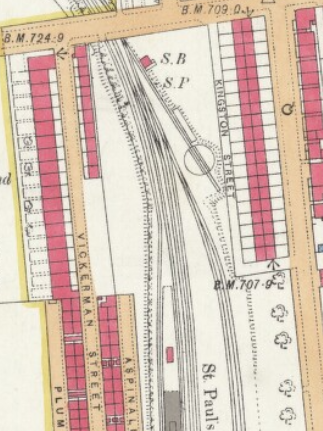Please tell me you are joking, or this is a wind-up? The small houses I have known that date back that far have had a steep staircase up between the two rooms on each floor: are you suggesting a spiral staircase up inside the back of the house or something? Most of us are concluding that some people have demanded a screen to shield themselves from a bright light causing a nuisance at night. I believe that "at that time, almost everybody" had very little money to spend on anything other than food and rent, especially if you could only afford rooms in a small house backing on to the railway.
and as for "wooden notice boards, fixed to posts, some possibly being "do not trespass" notices to discourage people from entering the land" I am amazed that it might have been worth anyone's while putting up notices on substantial high posts in front of specific windows! Perhaps "Stop spitting out of this window?"
Agreed!
If you look closely, the several of the "things" that appear to be in front of windows are actually shadows from posts further away from the houses. There are rectanular plates - possibly wood or metal - attached to what look like wooden posts several feet high - and typical of the type of notice that were used to provide information or warnings.
I am not suggesting spiral staircases - just two separate staircases, one from ground level to first floor, the other either up to a second floor, or alternatively down to a cellar. Terraced houses with cellars were not uncommon - often used for storing coal, etc.
And even if they were poor, people had pride and modesty, and even if the material was cheap, secondhand and/or flimsy, having net curtains was important to many people. My late mother & aunts grew up in that era, and although neither wealthy nor totally impoverished, every window would have net curtains.
If there were complaints about lights or noise from the railway, the solution would have been a high fence or other devices on railway property - if they could persuade the railway to do anything. There is no way that a typical property owner / landlord in those days would have spent their own money. The usual response would have been "tough - get used to it".


